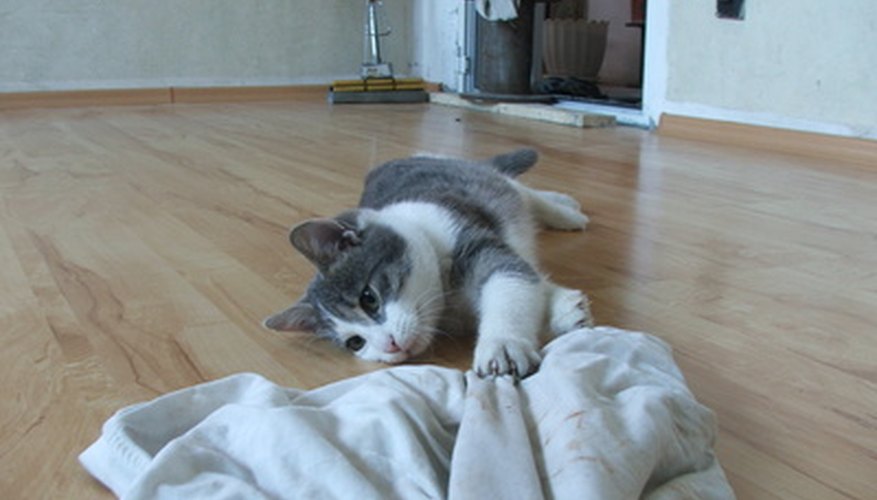Cat urine can completely ruin some surfaces. Luckily, laminated floors are an exception. Laminated flooring is an increasingly popular choice among homeowners because of its ease in cleaning and maintenance. Because laminate flooring is relatively non-porous, liquids are not easily absorbed. If cleaned up quickly and thoroughly, the cat urine will leave no lasting marks or odours on your laminate floors.
Soak up cat urine with paper towels as soon as it is found. Because laminate floors are relatively non-porous, the liquid will sit on top of the laminate floor, making it easy to clean. Avoid letting it sit too long, though, because excessive liquids can seep between the planks, causing the floor to expand.
- Cat urine can completely ruin some surfaces.
- Because laminate floors are relatively non-porous, the liquid will sit on top of the laminate floor, making it easy to clean.
Combine 237 ml (1 cup) white vinegar with 3.8 litres (1 gallon) of warm water. Using a damp mop, mop the area thoroughly to disinfect and eliminate urine odours.
Wipe the area with a soft, dry cloth to remove any excess liquid. Repeat the process as necessary if any urine odours linger.
Rinse the area with a damp cloth to remove any lingering smell of vinegar. Dry the area again with a soft, clean cloth to avoid leaving any liquid sitting on your laminate flooring.
TIP
Keep your cat's litter box fresh and clean to minimise any future accidents on your floors. Seek veterinary attention if your cat frequently urinates outside his litter box. This could be an indication of an illness.
WARNING
Avoid using abrasive cleaners on your laminate floor, which can damage the finishing. Never use ammonia-based cleansers when cleaning up cat urine; the smell of ammonia can attract cats to using the area again.
